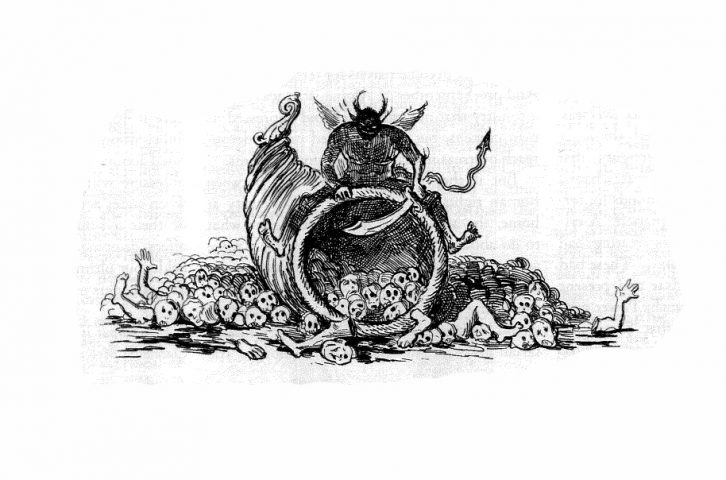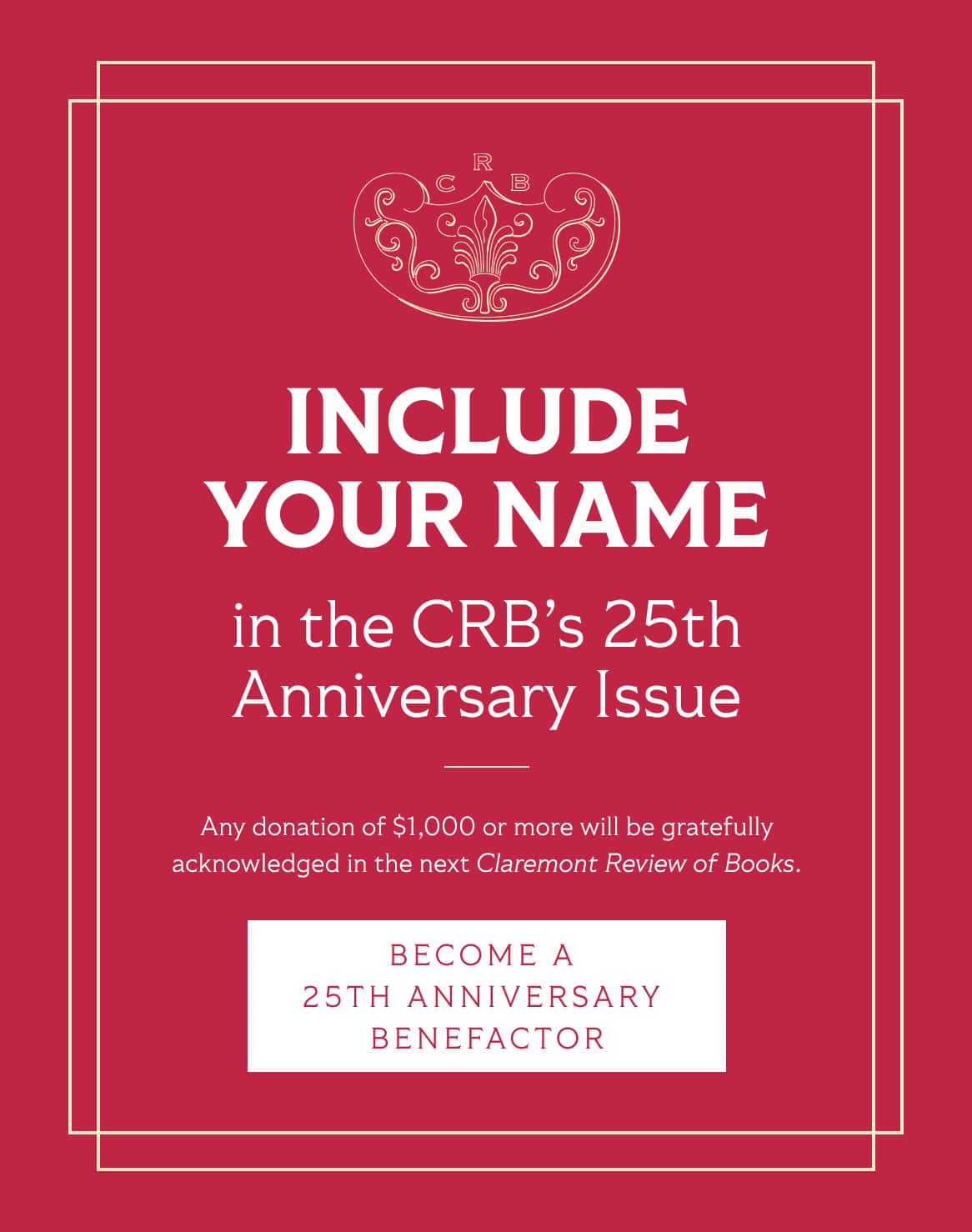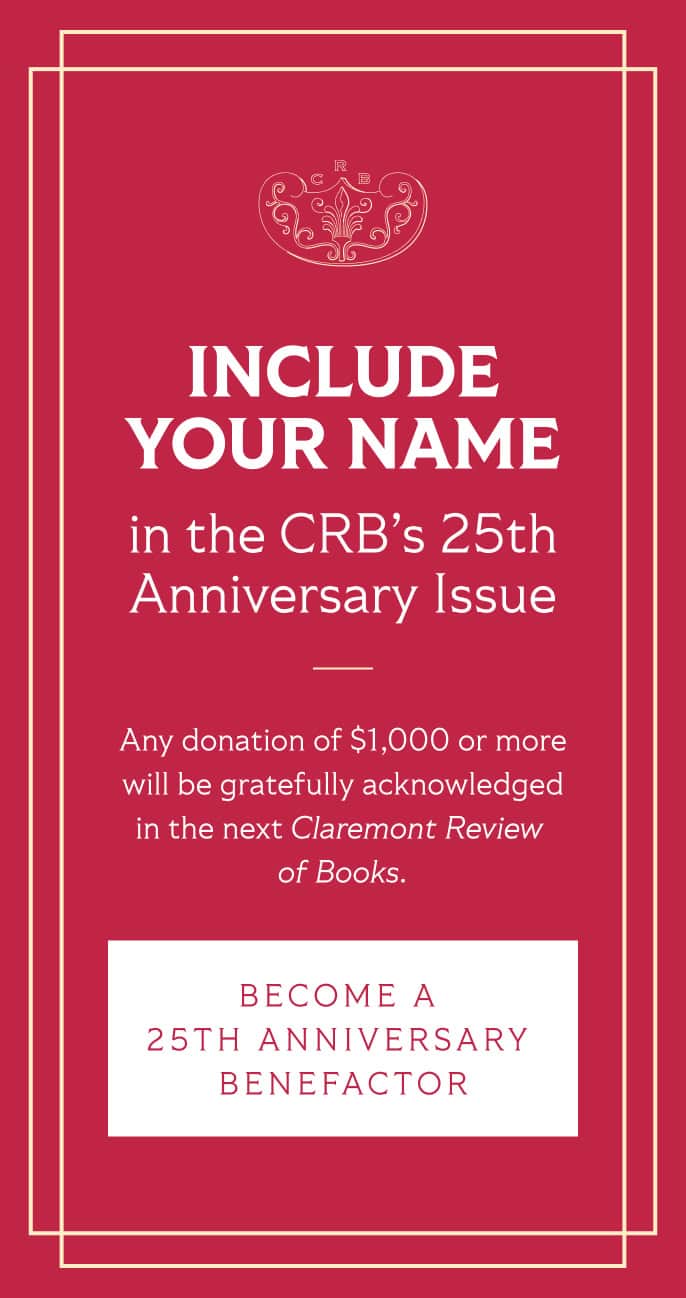Books Reviewed
In his opinion for the Court in Everson v. Board of Education, the 1947 case begetting the modern law of church-state relations, Justice Hugo Black invoked Thomas Jefferson’s 1802 letter to the Danbury Baptist Association. In that missive, the third president asserted that the First Amendment’s Establishment Clause had erected a “wall of separation between Church & State.” The fateful metaphor seemed to illuminate the “opaque”—the Court’s adjective—character of the Establishment Clause so successfully that it became irresistible to the justices, who returned to it time and again. Patronized by politicians, professors, and pundits, the “wall” soon loomed so large in the public mind that some citizens believe the phrase appears in the Constitution itself.
Daniel Dreisbach, a professor at American University, has now written a valuable history of the “wall of separation” metaphor. The scourge of strict-separationist ideologues in the academy and elsewhere, Dreisbach describes his volume as a “source book for jurists and scholars who use Jefferson’s metaphor.” It is all of that and more. In an exhaustive bibliography and a profusion of equally exhaustive footnotes, he gives us an omnium gatherum that will stand for years as an incomparable storehouse of information about the wall. Along the way, he delivers a devastating indictment of the post-Everson Supreme Court for misapplying Jefferson’s metaphor and, consequently, for grossly distorting the meaning of the First Amendment.
Dreisbach reveals that at least three important historical figures before Jefferson employed the trope: Richard Hooker, Roger Williams, and James Burgh. Dreisbach eliminates Williams as a source for Jefferson and suggests that, though the third president might have encountered the metaphor in Hooker’s writings, it is far more likely that he met it in the voluminous productions of Burgh, an 18th-century Whig popularizer much read by the founding generation. Dreisbach presents a minute examination of Jefferson’s composition of the Danbury letter, pointing out that the president was motivated at least as much by political as didactic motives in writing to the Connecticut Baptists and that his Danbury admirers may have been discomfitted by the letter’s separationist tone inasmuch as they refrained from publicizing it. The Danbury letter languished in relative obscurity throughout the 19th century—it was, however, cited by the Supreme Court in Reynolds v. United States (1879)—and it remained more or less forgotten until the Court “rediscovered” it in 1947.
By far the book’s most important contribution is Dreisbach’s analysis of the Court’s misinterpretation of Jefferson’s meaning. Jefferson viewed the Establishment Clause in the context of federalism, to which of course he was passionately devoted. So far as he was concerned, the wall of separation applied only to the federal government; the Establishment Clause did not touch the individual states, which were constitutionally at liberty, he believed, to make any arrangements whatsoever regarding religion, even ones that he would have deplored, such as legally establishing religion on the model of England or even Geneva. For Jefferson, Dreisbach argues convincingly, the Court’s application (in Everson, and subsequent cases) of the First Amendment to the states would be nothing less than a subversion of the Constitution, transforming a provision meant to limit government into a universal rule empowering the federal courts to dictate church-state relations throughout the land.
Although Dreisbach stops short of explaining Jefferson’s philosophical views about the appropriate relationship between government and religion, Philip Hamburger tackles that subject head on in his new book. A law professor at the University of Chicago, Hamburger concludes that Jefferson was a strict separationist in the modern sense of the term and that the Court understood correctly his “wall of separation” gloss on the First Amendment. Neverthless, argues Hamburger, the Court was wrong about the First Amendment because Jefferson was wrong about it. According to Hamburger, virtually no American during the Founding Era, especially not the evangelical dissenters who often allied with Jefferson, favored the separation of church and state. To be sure, they opposed government’s legally establishing one religion at the expense of all others; but “separation” of church and state was universally feared as a measure that would deprive government of the moral foundation needed to create and maintain a good society. Thus Hamburger persuasively argues that the First Amendment could not have meant a strict, universal separation of church and state; and by following Jefferson in so construing it, the Court was wrong on hermeneutical grounds as well as on the jurisdictional grounds urged by Dreisbach.
How could the Court have permitted itself to be so badly misled about the meaning of the First Amendment? Put simply, why was the Court’s history so bad?
The answer is not the usual suspect—the Court’s indulgence in “law office history.” Dreisbach, in fact, points out that Justice Waite introduced the wall metaphor into the Reynolds decision only after extensive consultation with the most highly respected historian of the era, George Bancroft. Moreover, documents in the Library of Congress prove that Justice Rutledge, an ally of Justice Black, was a confidant of Irving Brant, the distinguished Madison biographer, and crafted his opinions in consultation with that scholar. Since Bancroft and Brant were both committed political liberals, it might be objected that the Court did not consult the right kind of historians. But even the most objective scholars can not provide jurists with the one, true answer about the 18th-century meaning of the Establishment Clause.
* * *
Opinions of the founding generation were scattered all across the spectrum on the question of the assistance government could give religion. Consider the Baptists, the most ardent separationists in the Founding Era. Some Baptists in Massachusetts and Maryland actually favored selective state financial subsidies for churches; others, while disapproving financial support, encouraged the state to print and distribute bibles; Virginia Baptists opposed both measures but were happy to accept public accommodations for church services. Presbyterians were divided over state financial assistance to churches as were political leaders in virtually every state. Statesmen like George Washington changed their mind on the issue. James Madison participated intermittently in public religious acts for 30 years, i.e., in issuing religious proclamations, which in the privacy of retirement he deplored. Jefferson permitted church services to be held in federal office buildings but was accused of hypocrisy for doing so.
Confronted by opinions so diverse and problematic, the best scholarship can be of only limited assistance in supplying the “correct” answer about the framers’ precise intentions regarding government assistance to religion—a painful conclusion for a supporter of the “jurisprudence of original intent.” Yet, according to a Massachusetts commentator in 1780, the meaning of the term, establishment of religion, was even then “prodigiously obscure.” If so, do today’s judges not deserve a degree of sympathy as they try to tease out the intentions of the drafters and ratifiers of the First Amendment?
Dreisbach’s superb book, and Hamburger’s as well, pierce the fog to this extent. They inform us that, if there is no “right” answer about how far the founding generation would have permitted government to go in assisting religion, there is indisputably a wrong one: the radical, unprecedented divorce of church from state that the Court has decreed since 1947.






